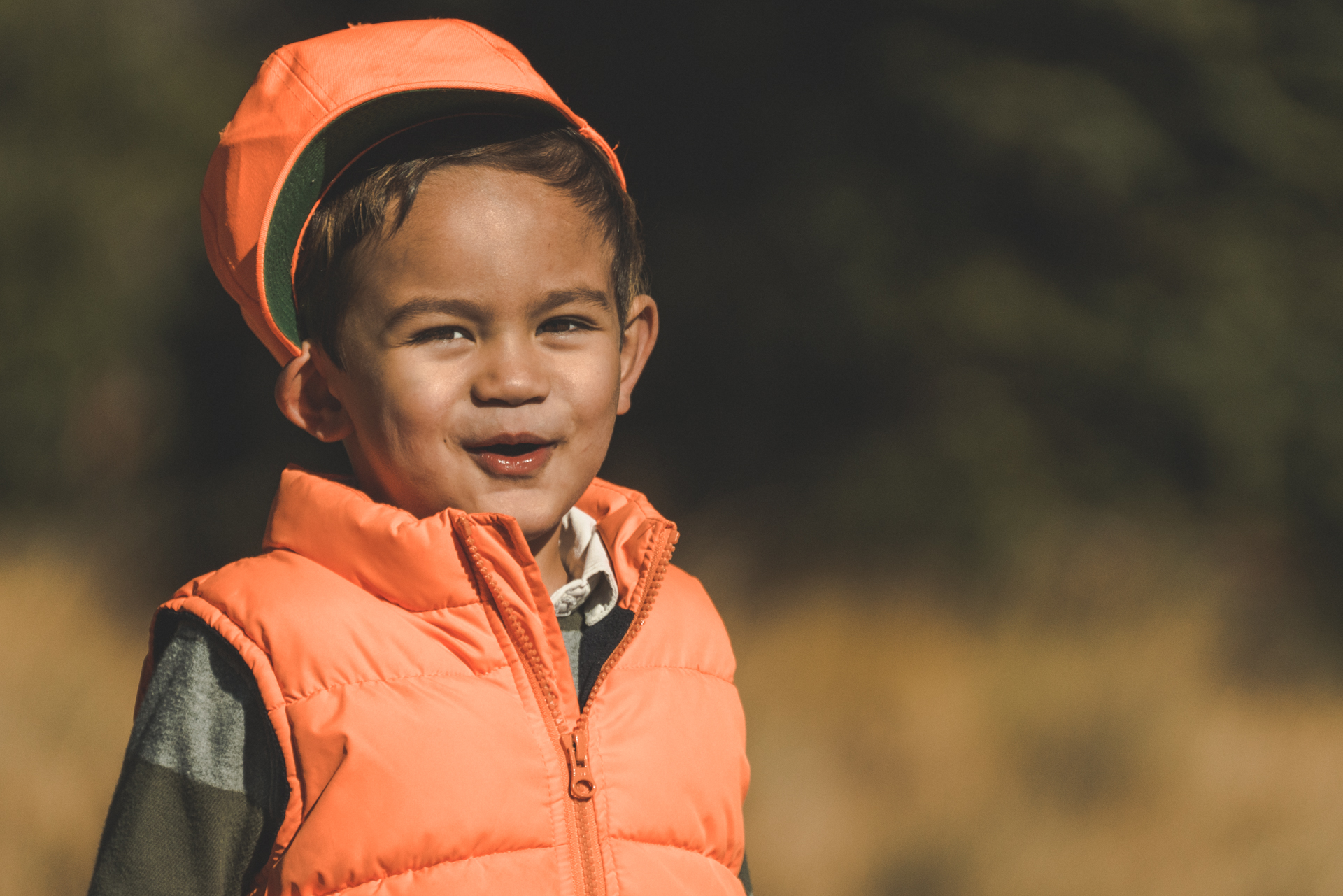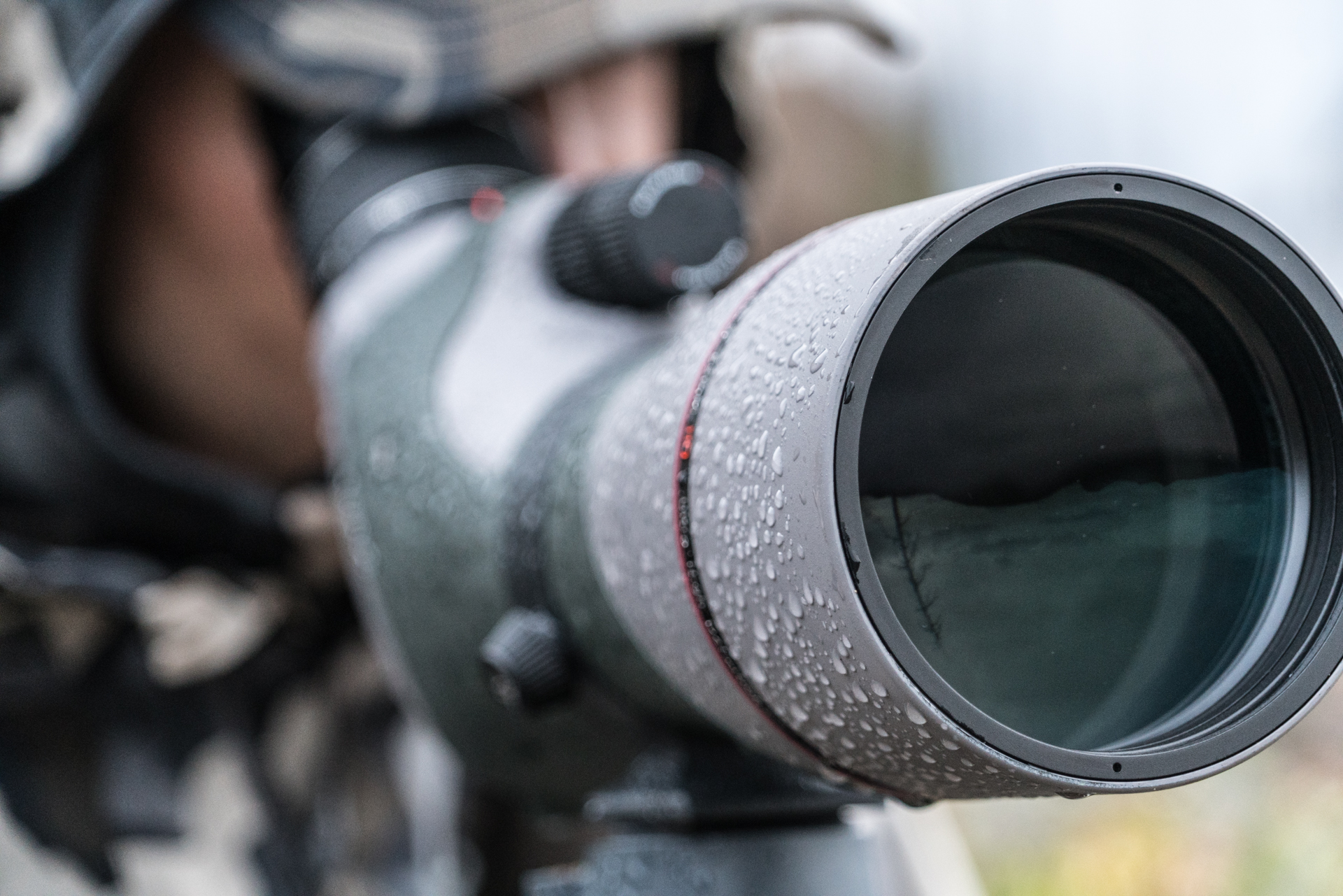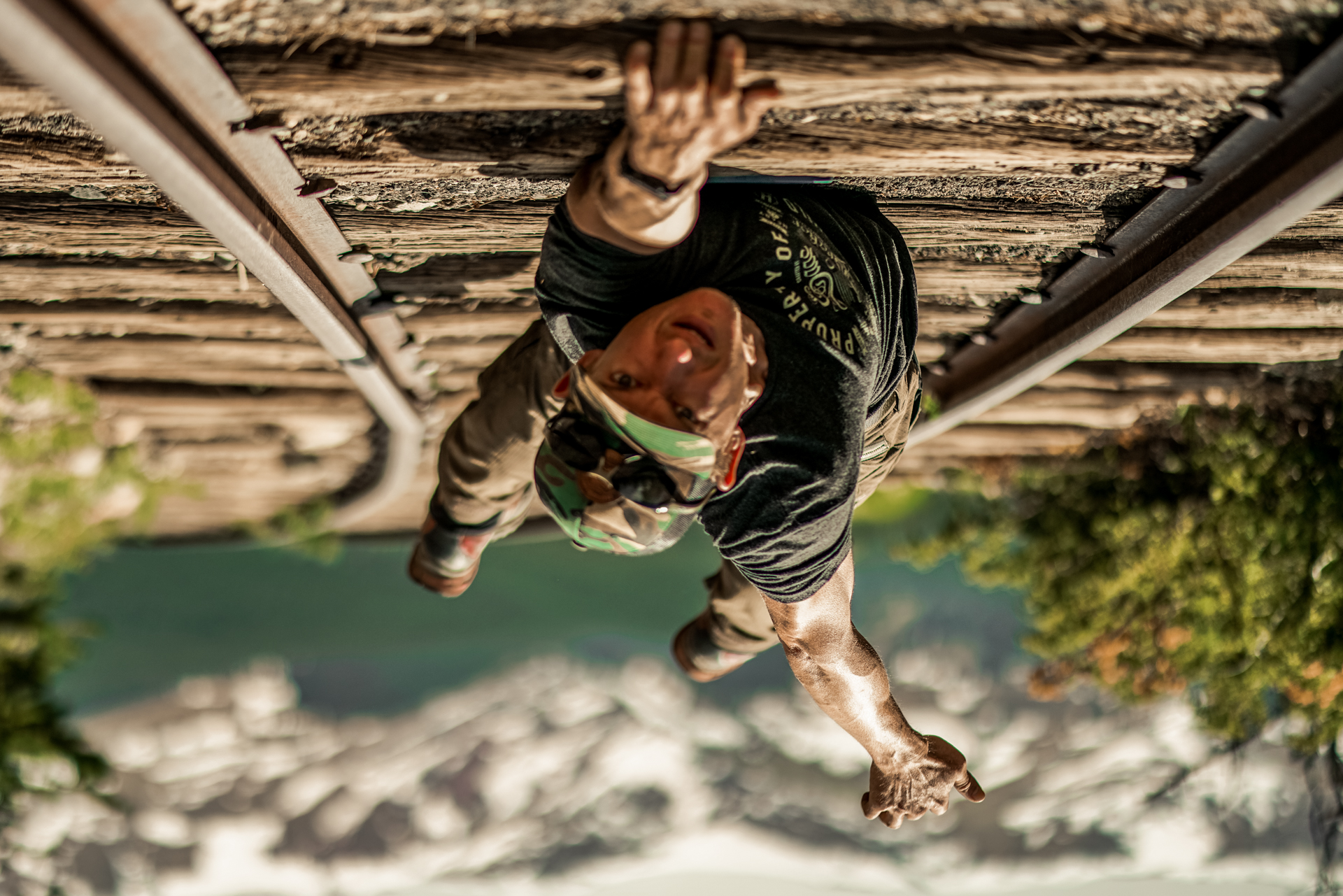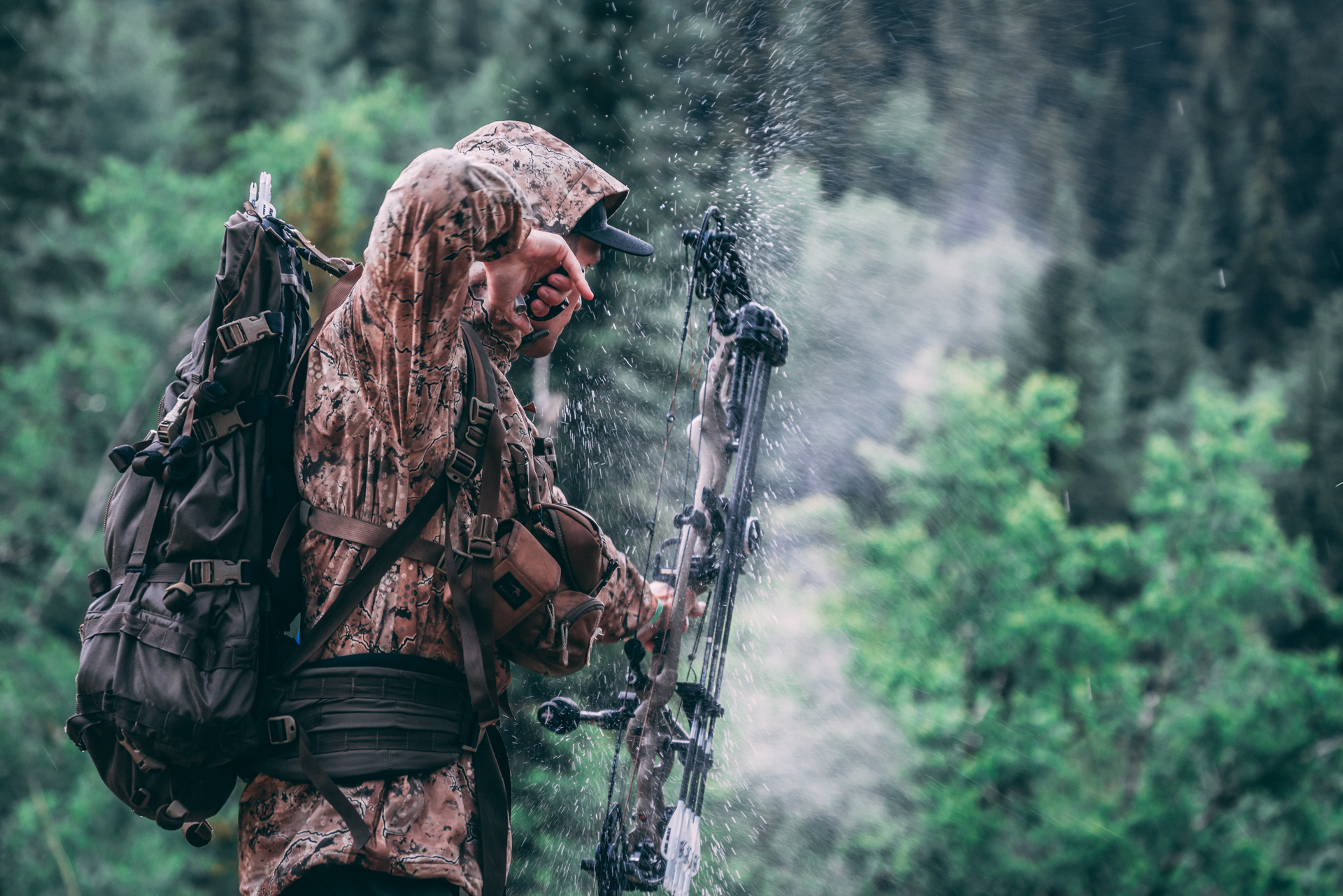Close Up vs. Wide Angle - Hunting Photography Series - Part 3

Part 2 - Close Up vs. Wide Angle - Hunting Photography Series
Shot composition makes or breaks a shot, simple as that. Using the proper focal length is one of the more powerful ways of making sure you compose it right. When the photographer doesn’t consider how he frames a particular shot, the picture often doesn’t grab the attention of the viewer because nothing is being said.
An image tells a story. How you frame it will purvey the mood through perspective.
So you must first think what you want the photo to convey before you determine the focal length of the lens (or how much you zoom in or out for that matter).
Ask yourself some of the following questions before you snap the shot to help you determine whether to use a wide and or close up shot.
Are you trying to share the emotion, the frustration or elation of your subject?
Are you trying to show how insignificant the subject is in his/her environment?
Is it a landscape shot without a specific subject?
There are a ton of questions such as this that you should be asking yourself before you push that shutter button.
Focal Length Defined in Terms We Can Use
The focal length of a lens determines the magnification at which it images distant objects. This is how Wikipedia defines it. I could agree with that. A fancy way of saying how much you’re zoomed in. But that’s not what’s important to us, rather what it does to the images is what we care about.
So we’ll cover what the difference is between a wide angle vs. a zoomed in shot and how it will effect your composition.
We should talk about how focal length is measured. We’ll be conforming to the rest of the world here and be working with millimeters. A wide angle lens is anywhere from 14mm up to about 35mm. Going up from there out to 600mm you’ll be getting into a longer focal length.
Here is where you can find the lens focal length and f-stop.
A wide angle will show more of the scene. It will also make the distances between objects appear further apart than an image shot with a long focal length (you can also read that as “zoomed in”). Using a wide angle lens will also give you a greater depth of field.
A long focal length will make a scene more compressed, or make it seem like there is less distance between objects. It’s a great way of pulling the background in closer to your subject. You can also get a shallower depth of field with a longer focal length.
We’ll work through some examples of when you might want to use different focal lengths according to different situations. When it comes to art, there are no hard set rules. But knowing why you’re doing what you’re doing is important so let’s try to get an idea of that first before we going breaking the rules.
Close-Up Shots
Ninety percent of my shots are close-ups. For me I just think they tell more of a story. Sunsets are well and great, but everyone shoots them and they won’t separate you from the crowd. Find a way of showing the emotion in a given photo and you become a master at storytelling. Having your subject standing out in a field blending in with his surroundings just won’t cut it. There are many ways of accomplishing this, but getting in there nice and close will certainly be one of those ways.
Get in there, see the pores on his skin, see the troubled look in his eyes. Use the background to help place the setting, but use your subject to relay emotion.
Keep the subject in focus and let the background help tell the story.
You can achieve a close up in two ways.
Standing a bit back from your subject and using a longer focal length.
Standing very close to your subject and using a wide angle.
I typically will shoot these shots with a longer focal length. This allows me to make the background appear closer to the subject. Don’t get me wrong, standing really close to the subject with a wide angle lens for a close up can be cool as well. Don’t go overboard however, a really wide angle can make a the subject look distorted.
This picture was taken with a 14mm lens. Notice that it has a great depth of field. This is mostly due to using a wide angle lens.
Example:
You’re five days into a hunt and the only shot opportunity was just blown by your hunting partner. Frustration levels are high, disappointment and doubt have crept in. You’ll never be able to recreate that feeling, so get that lens in there and capture that authentic moment. You can relay a slew of emotions to the viewer just by the look on his face. Make sure the weapon is seen in the shot, although subtly to relay that he is hunting. The background environment will convey the setting, whether you are hunting in deep timber for elk or spot and stalk hunting in the high country for mule deer. Capturing the surrounding elements are crucial in the story, but they need to be secondary to the subjects emotions. Meaning, capture it in his eyes and face.
Tip: Make sure the eyes are always in focus. An image is lost if the subjects eyes are blurry, so if using a shallow depth of field make sure the eyes are crystal clear in focus.
Make sure you keep the eyes in focus.
Close-ups can also show a subject in a light that has never been seen before. A close-up of the broadhead laying on your bows rest with the background element of sitting in a tree stand is way more exciting than another selfie of you duck-lipping it for the crowd in your tree stand showing off the kitty cat face paint pattern you work so hard on.
Or how about that dew about to fall off the tall grass while your Labrador works the pheasant fields in the background.
Getting close up in this shot helps tell the story. Seeing the water drops on the spotting scope helps relay the weather and misery that comes along with it.
Think of different foreground elements that represent the hunt and use background elements to reiterate what you are doing, but have it out of focus making it secondary to the main object.
Shooting close-ups can instantly change your game. Try it out. Go on a hunt and promise yourself that you’ll shoot nothing but close-ups for a couple of days and see how quick your photos improve.
Try to mix up your shots to tell a story.
Wide Angle Shots
Wide angle shots certainly have their place. What would a gorgeous mountain range be if you were only focused a singular tree jutting out of the side of it? How about a fly fisherman casting out below a roaring waterfall? It might be worth capturing the whole scene in this case, not just the wooly bugger he’s flipping out there.
A wide angle shot is often used to capture the beauty of the environment you’re in, whether there is a subject in it or not.
Wide angle shots allow you to capture more of the environment that the subject is interacting with.
Again for me, I always like to have a subject in the shot, interacting with the environment. This usually involves having them very close to the lens to separate them from the background, but keeping a great depth of field so that everything is in focus.
As with many rules, the opposite can also make for a terrific composition. Maybe you want the subject to feel insignificant in the vastness of his environment. Then by all means have them further away from the lens so that they feel small in the environment.
Warning. You need to find a way to have the subject stick out if you use the above scenario. Have them dress in bright clothing to stand out or above the skyline so they stand out above the horizon.
Putting it Into Practice
You read about it now it’s time to do it. Knowledge is worthless if not put into practice. Go out there and try four different shots. I’ll list them below. Use the same subject so you can compare how each picture makes you feel when looking at it.
Close up shot with a long focal length. Say somewhere above 100mm.
Close up shot with a wide angle lens. The camera will often only be a foot or so away from your subject. Less than 35mm.
Wide shot with a wide angle lens. Think landscape here.
Wide shot with a longer focal length.
Now sit there and analyze the differences between the four shots. All four of these techniques can be used for different situations and different moods. Find what does what and then use it! Create an image, don’t just snap the shutter.
Remember to hit me up on Instagram at fredbohm and let me see how you’re using these techniques.
Continue on to Part 4 - Angles, Framing, Rule of Thirds and Image Depth
// Fred Bohm











